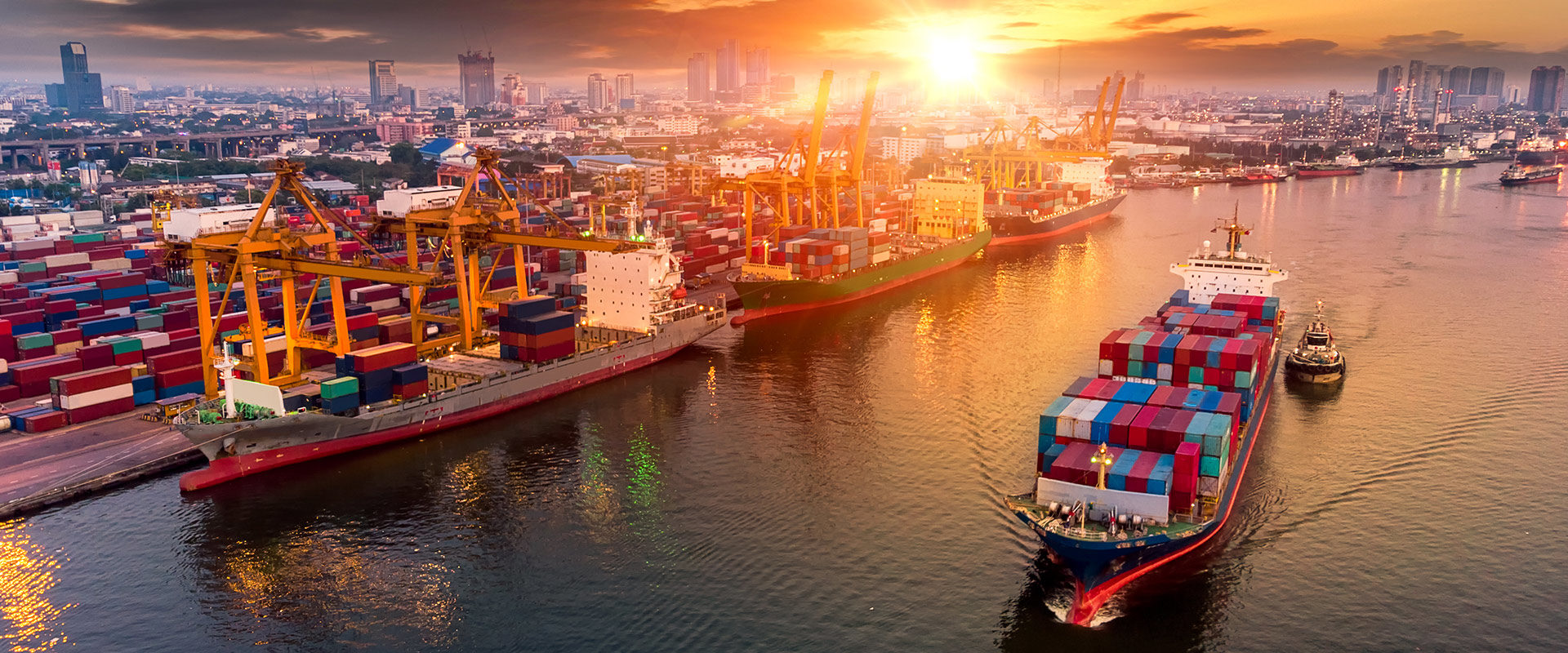Technology is in almost every sphere of human life; it is present also in the shipping industry. The smart ship and autonomous technologies are examples of developments used in the modern marine sector.
Improvements in shipbuilding (megaships), advanced materials, smart shipping, propulsion, robotics, big data and sensors are making the work on the Earth’s waters easier. Companies and ship engineers should be aware of these technologies to improve their workforce.
With the tech progression, the marine sector can be safer for the environment and still determine the global market’s escalation.
Current Trends for Shipping and Logistics in 2024 and Beyond
According to Economist Impact, in addition to facilitating more than 80% of global trade, the marine sector is also accountable for 3% of greenhouse gas emissions. The paragraphs below describe some of the technology trends that improve ship technology for transforming ocean industries and reducing their environmental impact. Advanced technologies can help with planning sea space strategy and maritime traffic management. Shipping technology is setting up the trends and challenges, changing maritime management, among others, thanks to smart fleet operation and autonomous vessels.
“To sustain resilience against future challenges, especially climate change, the sector must not only accelerate decarbonisation but also enhance port efficiency and adopt new technologies, focusing on the needs of developing economies.”
UN Trade and Development (UNCTAD), Review of Maritime Transport 2023
1. Artificial Intelligence
Artificial Intelligence (AI) has the potential to end repetitive tasks and improve the quality of the shipping industry. An AI-driven sector is logistics. Artificial intelligence helps with route optimisation, safety, decision-making and automation. Above all, AI also helps distribute goods between hundreds of vessels passing through ports and avoids traffic.
As per Gitnux, a website about the latest market trends, statistics and business data, 90% of newly built ships will have AI capabilities by 2030. A third of marine companies have already begun experimenting with AI and ML.
“It is predicted that, by 2040, AI applications will affect almost every aspect of life. Aside from profit—one study finds that early adopters of AI in the transport and logistics sector enjoyed profit margins higher than 5%—its potential in driving efficiency and achieving sustainability goals will be a key driver of AI adoption in the future.”
Economist Impact, Global Maritime Trends 2050
2. Sensor Technology
Sensor technology is one of the most advanced and well-developed technologies, especially popular in industries connected with transportation. Sensor technology replaces many of the manual tasks, like examining equipment aboard ships.
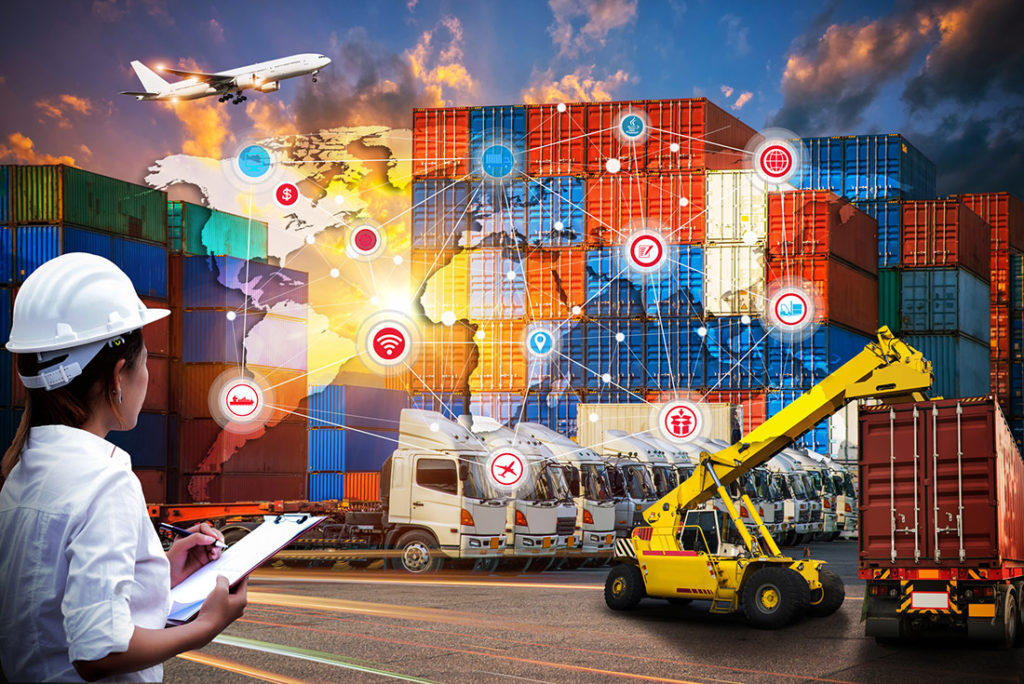
Connecting all machinery to sensors helps marines and ship technicians to manage their equipment more efficiently. It also allows them to detect problems at an early stage and identify their cause. By remotely analysing the data, companies monitor the functioning status of machines. In result, they can analyse the maintenance necessary at regular intervals and their total operability aboard ships.
Sensors can connect with machine learning and AI. This means they may link to remote facilities and analyse data, sending out alerts if any of the ship’s components need maintenance. Calibrated correctly sensor technology can help with ship efficiency.
3. Robotics and Cybersecurity
Advanced robotics are improving many industries, including maritime. Industrial robots are already used in the security, maintenance and inspection of vessels. They can do tasks, such as packing, delivering, inspection and even firefighting. Robots can also help in risky environments where a human’s life is in danger by providing autonomous navigation and rotating the ship. In times where ships are often monitored remotely, it is crucial that the maritime industry invests in cybersecurity to safeguard confidential information, guard against cargo theft, and stop operations-threatening intrusions.
Some robotics work with sensors to identify and record all the data in the ship and analyse it. Besides robots, there are drones that help the maritime industry in search and rescue. They can deliver goods to vessels and help with remote inspections, security and surveillance. In the future, robotic automation may replace manpower in some sectors but in others it will be more about the collaboration between man and robot (cobots).
4. Automation and Autonomous Control
On land, autonomous technology is helping to make decisions based on the route, including detecting other cars, pedestrians, traffic signals and securing the car to remain on the road. Automation in shipping is helping to deliver products without any interference. Autonomous systems operate with high efficiency, allowing for detection of materials with advanced heat mapping, eliminating human error possibilities.
Smart technologies help vessels stay on course without requiring constant input from the captain. Thanks to the real-time route information, action can be implemented immediately in case of any issues.
4. Big Data and IoT
Data analytics check the information that comes from large operation systems such as ships and ports. The predictive analytics about container types, weight and destination as well as ship data (trim, stability, engine performance and communication) are used to make data-driven decisions for the safe and efficient operation of ships.
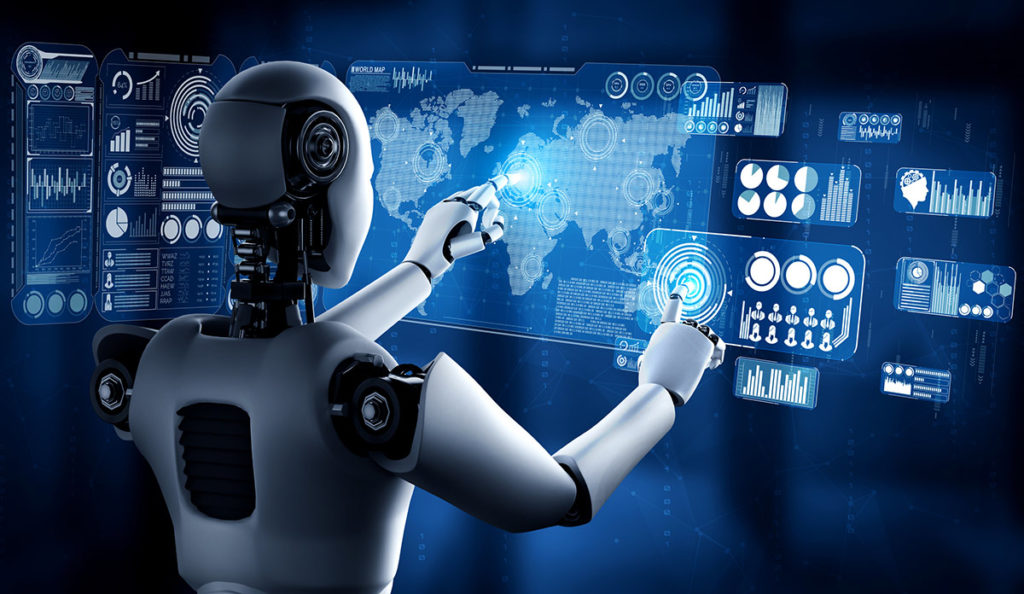
Big data on ships can give results about historic container trends and ocean conditions. The ship responds to various changing weather conditions. Analysing different parameters can help with efficiency and overall performance.
The Internet of Things (IoT) also enables control of some objects even remotely. It works with a GPS and cloud-based database which stores all the data collected by devices on the ship. IoT can connect all the other devices and shipments like robots through wireless networks.
“The maritime IoT market was forecasted to grow at a compound annual growth rate (CAGR) of 6.2% between 2020 and 2027. […] This growth can be achieved on the back of improving connectivity at sea through the use of lower Earth orbit satellites and 5G capabilities to enable higher data rates and security. There will be an expected 30.9 billion IoT units in 2025, up from 13.8 billion in 2021.”
Economist Impact, Global Maritime Trends 2050
6. Augmented Reality
Augmented Reality (AR) is present in lots of industries today. As one of the technological progressions, AR is mainly used by seafarers. But also, some of the maritime training institutes have started to use it. Thanks to AR technology, marine students can experience real-life scenarios.
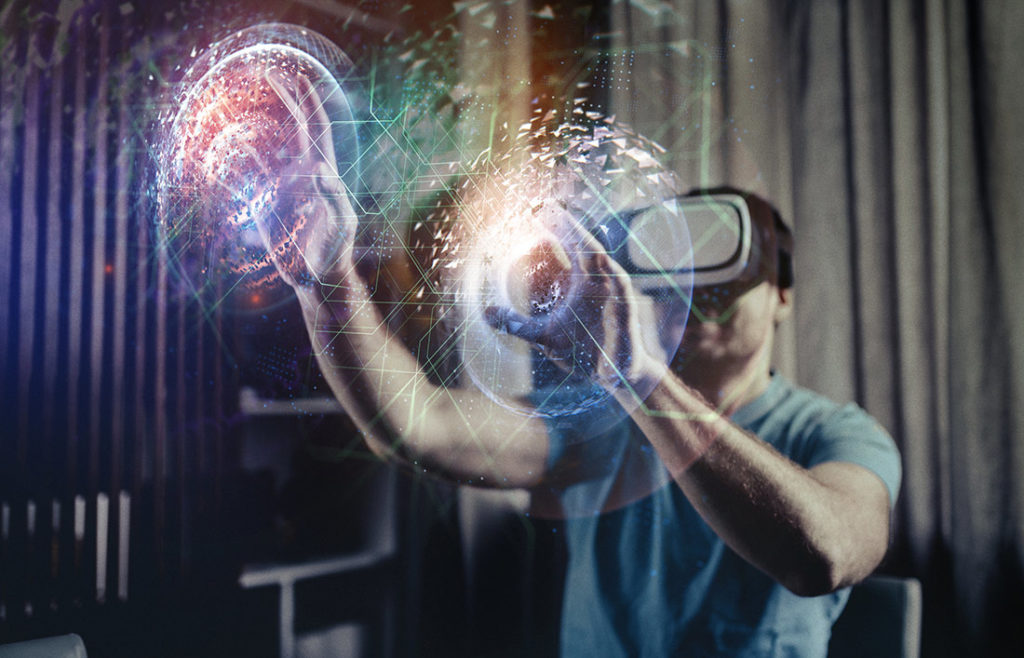
AR also helps with efficient maintenance and vessel inspections. Plenty of the maintenance tasks can be done with the help of guidance software and tools which allow visualising images. There is no need for technician help.
AR is also present in the shipbuilding and design process. It simulates virtual projects and helps resolve some technical issues. It lets people imagine the idea before implementation.
7. Ship Propulsion Systems
The new ship propulsion systems not only provide better control of the ship but also help the ecosystem, as the wind, solar, and nuclear propulsion systems are the most widely employed propulsion systems in ships. These pure, carbon-free renewable energy sources emit no emissions, or are recyclable.
The transition control of the propulsion systems to smart technology enables a device to make decisions and control the equipment with high accuracy. Both captain and marine engineers can monitor the status of the marine diesel engines. The software shows and ensures that they always remain within the acceptable operating regions.
8. Advanced Materials and 3D printing
Ships have an unfavourable effect on the environment. The fuel, oil spills and waste effluents cause an increase in pollution and environmental damage. This is why investment in alternative energy management solutions is important. It can help reduce the emission of greenhouse gases such as carbon and sulphur.
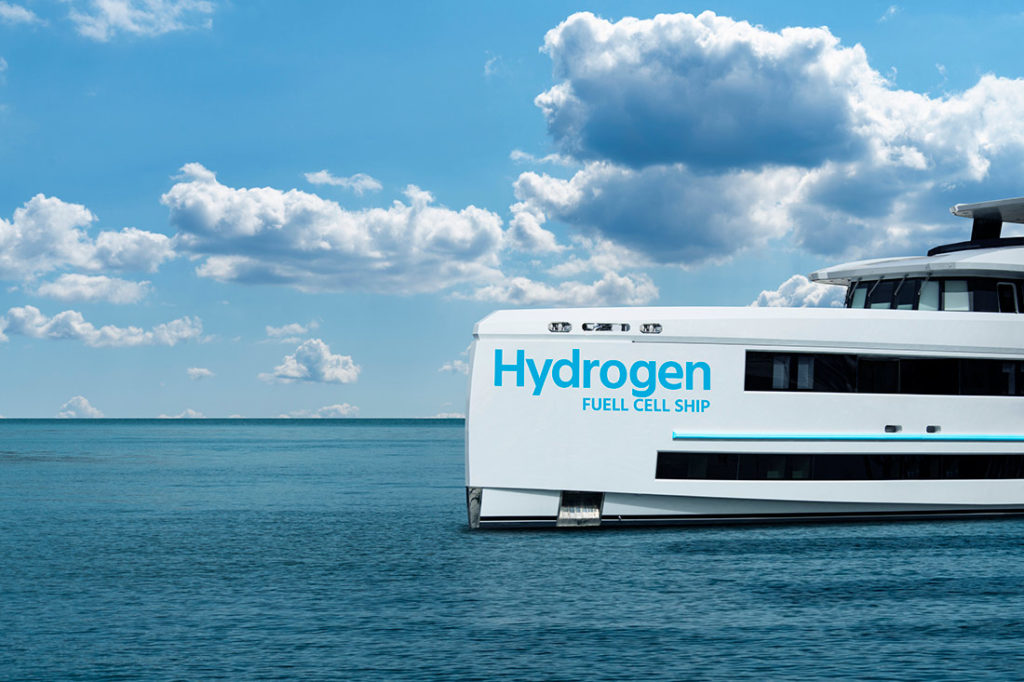
Because maritime is a big concern, it is crucial that it moves toward a green approach. Therefore, now a lot of new sea modes of transportation, such as zero-emission ships, are being developed to reduce the carbon footprint of the maritime industry. Many megaships are built from different, more sustainable materials, like fibre-reinforced plastic. It helps to reduce traffic and carbon but also carries large quantities of cargo.
3D printing is another technology that is becoming popular in the transportation industry and enhances shipping as it aids in the timely availability of spare parts onboard ships. It can also be used to design and construct new parts. Additionally, 3D designs and virtual models enable visualisation and remote monitoring by connecting ships with their virtual counterparts.
What is the Future of the Maritime Industry?
Considering all the shipping trends mentioned above, these are just a few examples of how the maritime industry is influenced by technology. The maritime industry is a key element for many businesses to provide goods and expand or develop the world economy. To ensure that trade services are efficient, ships and shipping companies need to focus on new technologies. Shipping technologies have a big impact on commercial shipping especially in regard to vessel design and operation.
Integrating smart ship development increases efficiency, research and is also a cheaper alternative for the oil. Technology trends present in the maritime sector help to reduce greenhouse gas emissions. They also provide alternatives to fossil fuels – fuel cell boats. At the moment, they are the most common energy source used in ships. In conclusion, technology will be leading the future of the maritime industry by improving maritime safety and ensuring that the ships are more sustainable and operating more efficiently.





